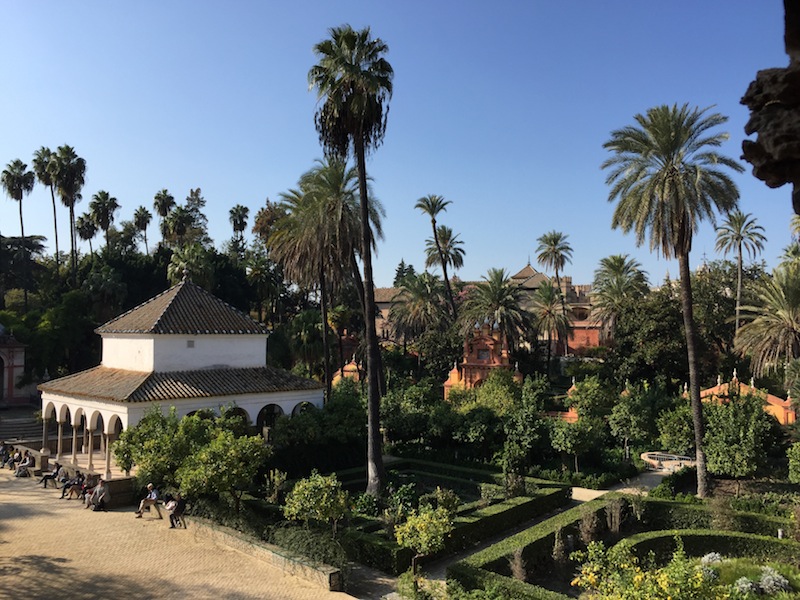On days when the news is dominated by atrocities and stories of hate, I find it good for the soul to go to somewhere like the Alcazar in Seville. It is a place of beauty, the work of generations of craftsmen and visionaries from many races and religions.
It was our first full day in Andalusia, free of the drab, wet days of a London November. But the news was grim. Bombings and shootings in Paris, dozens dead. In Seville, though, the sun shone, the temperature was in the mid-20s and the city looked fabulous. The horrors of Paris seemed such a long way away.

We walked feeling slightly numb into the historic centre of a city that so successfully mixes the Christian and the Islamic in its fabric, but where conflict between the two great religions was a staple of life 1,000 or so years ago. There was the Alcazar, surrounded by intimidating walls, the giant cathedral, and the giant bell tower/minaret of La Giralda. It’s where the cultural and religious heritage of the city is so powerfully evident.
Much of the surviving palace – part of the Cathedral, Alcázar and Archivo de Indias UNESCO World Heritage Site – dates from the 14th century but there are reminders of its earlier incarnation as a fort dotted about. It’s an amalgam of styles, from the Moorish to the Gothic, and some of it is so beautiful it made the hairs on my neck stand on end. The effect of it was mesmerising, from colourful tiling with rich geometric designs, to intricate carving in wood, stone and plaster.
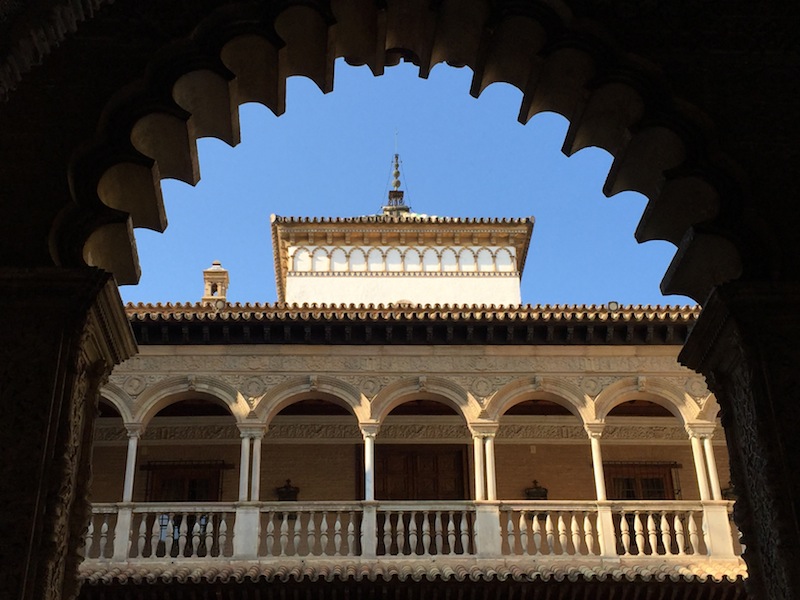
How ironic that the 14th century redevelopment of the site, which created the glorious Mudéjar Palacio de Don Pedro, was the brainchild of a man called Pedro the Cruel. As I walked around, it reminded me of the Bahia Palace in Marrakech – another Moorish splendour. The Hall of the Amabassadors – a key public room where rulers would’ve been on show to visitors – was a highlight. It has the most incredible wooden dome, with gilding and other intricate decoration that’s beyond description. I could’ve stood there, staring up at it, for hours.
The cool, airy palace rooms have little or no furniture and are all the better for it, for furniture would only be a distraction from the decoration.
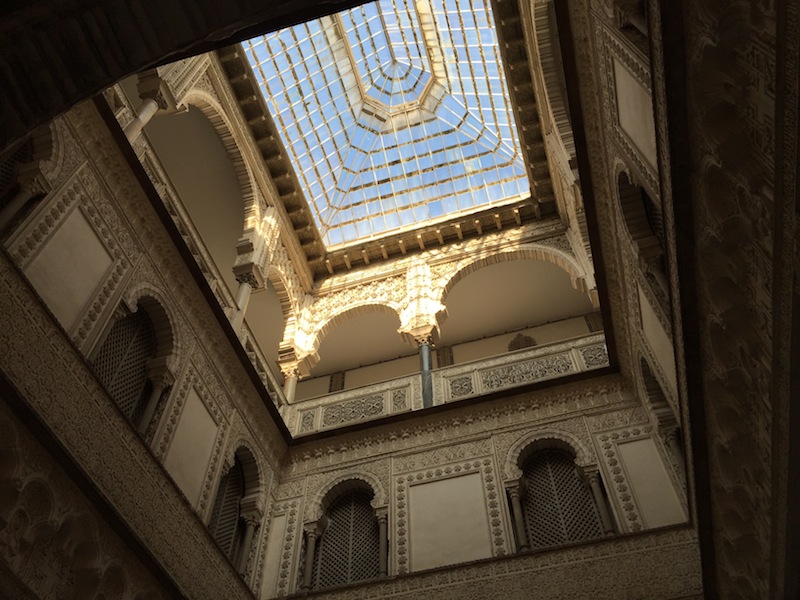
The lush gardens provided shade, while dainty fountains fed little channels lined with yet more colourful tiles. A peacock roamed and trees laden with oranges, which are everywhere in Seville, looked ready to drop their fruits.
What a highlight for our first day…
We’d arrived the night before at our gorgeous 5-star hotel, the 18th-century Palacio de Villapanes, on the edge of the historic Santa Cruz district. We managed a few hours at the busy and good-natured local bars, tucked into a few tapas dishes and drank lots of beer – me in the full knowledge that I was going down with my semi-traditional holiday cold.
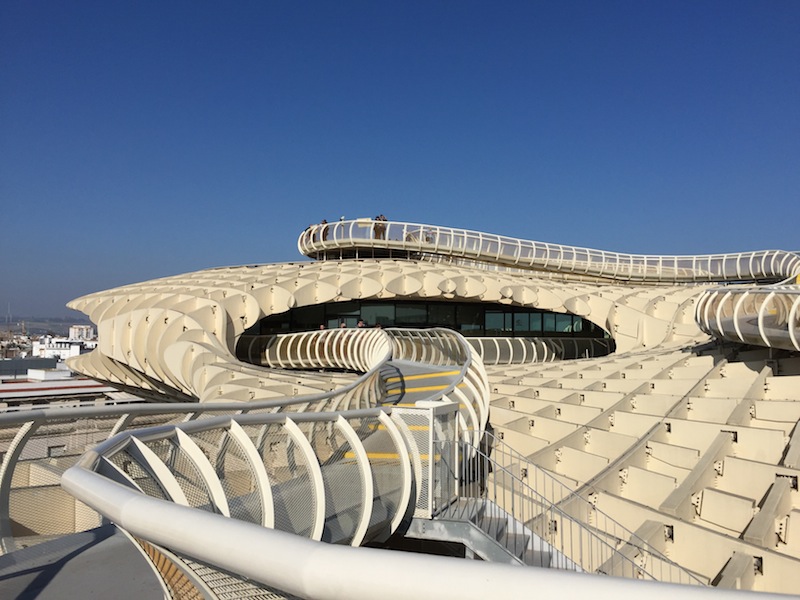
In the morning, before the Alcazar, we’d gone for coffee and croissant at the Plaza de la Encarnacion, which is dominated by the huge, modern Metropol Parasol. It’s like a cross between a massive, multi-trunked tree with an endless canopy and a giant reptile striding across the square, and represents a newish landmark for the city.
Below ground is a little museum that reveals some of the Roman remains uncovered during excavations on the site, most notably some fine mosaics. There’s a market on the ground floor but it was the canopy walk that we were aiming for, eventually finding the poorly-signposted entrance and a thoroughly miserable ticket vendor.

Up top we enjoyed the excellent views of the city, with its collection of churches dominating the skyline and, in the distance, the buildings of the 1992 Expo that included a replica Arianne space rocket(!).
Leaving the square and some busy weekend shopping streets behind, we explored little streets and alleys with stunning Andalucian architecture. We stopped at the 16th century Lebrija Palace, with its collection of antiquities gathered by a 19th century countess. Mosaics and all manner of odds and sods were on display but the building itself was the star – the by-now familiar mix of Moorish and later Spanish influences. The tiling never failed to impress.
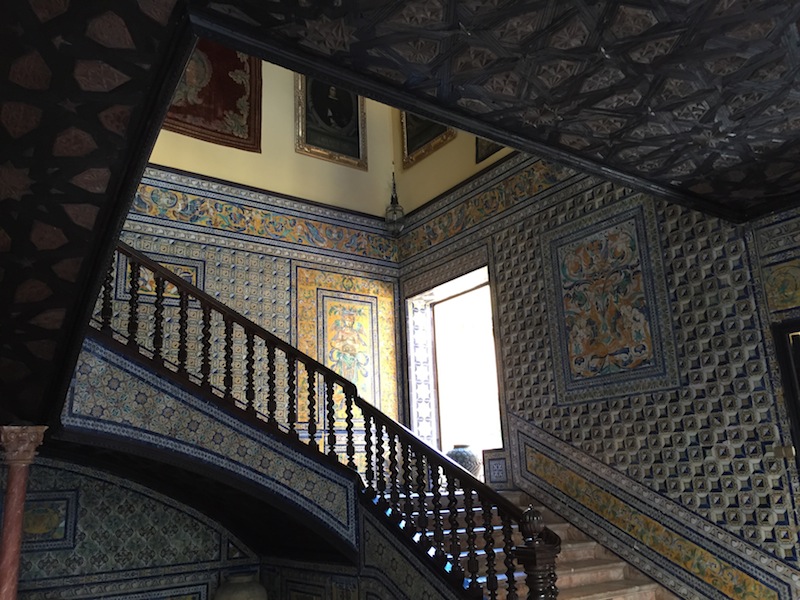
In the evening we ate out in the touristy heart of the city, winding our way through the maze of Santa Cruz alleys and streets, trying not to get lost. The food wasn’t great. The beer was. Miraculously, we got home without losing ourselves. But I’m sure there must be people we passed still trying to get out of that warren of a district…

